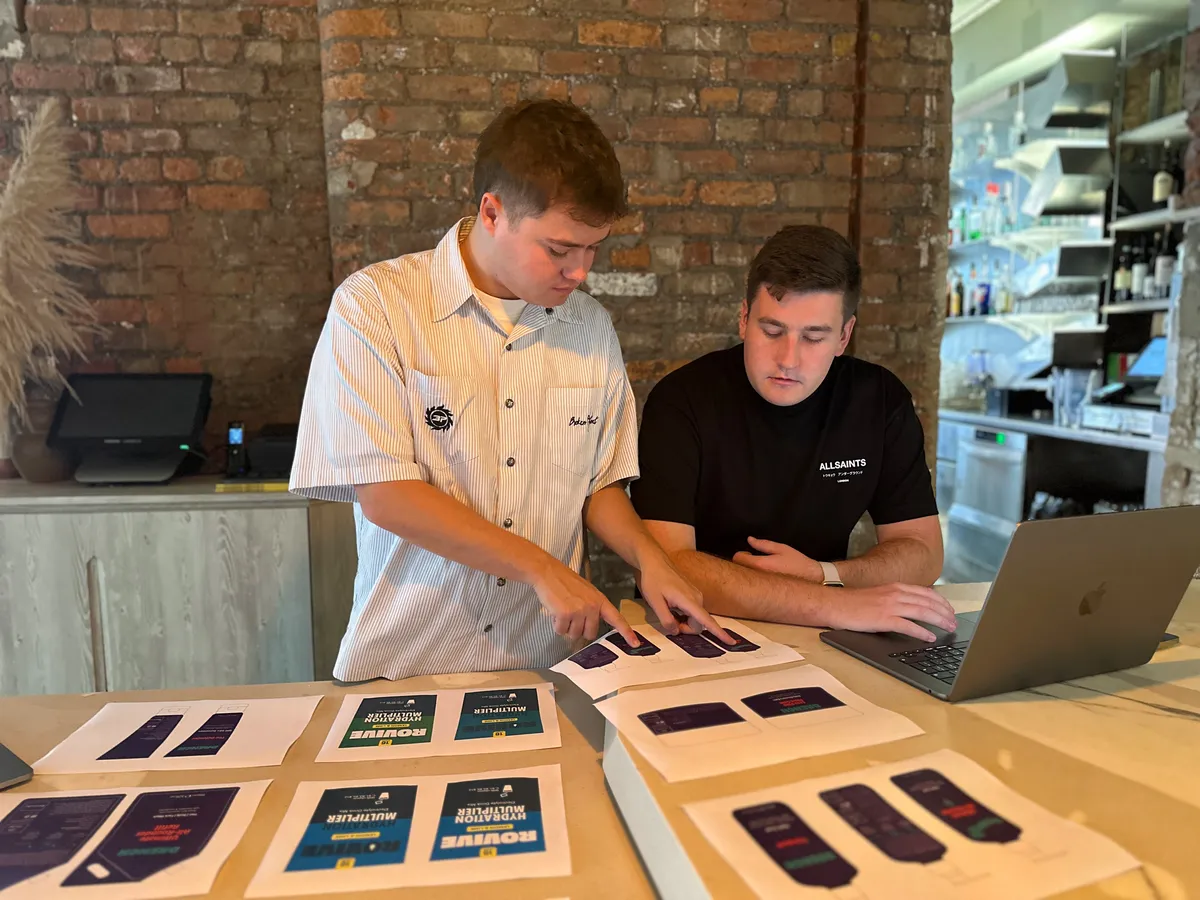
You’ve poured your soul into brand design, concept, campaign, whatever. Then someone comes along and says, “Hmm, not sure it’s quite working.”
Cue internal spiral.
But the truth is, if you want to grow as a creative, you’ve got to stop flinching every time someone pokes at your work. Not every opinion deserves rent-free space in your head but the right feedback does.
So take it in, strip out the ego, and use it to sharpen your skills. Because the creatives who last aren’t the ones who always get it right the first time, they’re the ones who know how to listen, learn, and come back swinging.
Feedback doesn’t have to dim your spark. If you use it right, it’ll fuel your next big idea.

First up: not all feedback is created equal.
Some of it is exactly what you need to hear. It’s specific, actionable, and comes from someone who actually gets what you’re trying to do.
And then there’s the noise. You know the vague comments like “It just doesn’t pop” or “Can you make it... more modern?” (whatever that means). These usually come without context or suggestion, and they’re not worth losing sleep over.
The trick is learning to spot the difference:
👉 Constructive criticism challenges you in the best way. It pushes your work forward. Example: “The layout feels a bit cramped. Could we explore more white space to let the messaging breathe?”
👉 Noise just makes you doubt yourself. Example: “I don’t know... it just doesn’t feel right.”
One gives you a direction. The other leaves you second-guessing everything from your typography choices to your life choices. Learn to filter out the fluff and focus on the feedback that actually helps you do better work.
Tip: When in doubt, ask why. If they can’t tell you why something doesn’t work, it’s probably just noise.

Your work is not you. (Yes, it’s personal. But no, it’s not your entire identity.)
As a brand and packaging design agency, we had to learn this the hard way. That’s why, after wrapping up each project, we started getting feedback through a simple post-project questionnaire. Just five solid questions, including:
1. What were the results?
2. Would you work with us again?
3. How does the client feel afterwards?
4. What went well?
5. What did we fall down on?
Was it terrifying? At first, yes.
But the feedback is exactly what we needed. It helped us spot blind spots, validate what was working, and fine-tune how we show up for clients.
Here’s what one of our recent clients said:
| Question | Feedback |
| Firstly, what do you think we could improve on? | Honestly, working with you has been fantastic! Everything felt well managed, communication was clear, and deadlines were met. If I had to suggest one tiny improvement, maybe just a few more progress updates along the way – but really, that's minor. Overall, I couldn’t be happier with how smoothly the project went. |
| What went well in the project? | Everything went really well! I loved how responsive and proactive you were – getting back to me quickly and anticipating what I needed made the whole process so easy. The designs exceeded my expectations and really brought my vision to life, which was such a delight. I also appreciated the little touches and attention to detail – it made me feel like you genuinely cared about the project. Honestly, working with you made my life so much easier and enjoyable throughout! |
| Finally, would you work with us again in the future? | Absolutely we would! |
Point is, we left our egos at the door, and our process got better because of it. So will yours. Every bit of feedback, even the tiniest tweaks, has helped us become more intentional and more aligned with the kind of experience we want to deliver.
So if you're holding back from asking for honest input, remember: it’s easier to build feedback into your process from day one. In the words of Nike … Just do it. Your ego might take a dent, but your work will thank you for it.

What if criticism isn’t the enemy? What if it’s actually your cheat code?
Most of us have this knee-jerk reaction to negative feedback even though listening well is what shapes the future of brand design. It can look like defensiveness, self-doubt, and maybe a bit of quiet rage. But if you can flip the script, feedback becomes your most reliable tool for levelling up.
Especially in creative work, where everything’s subjective and trends move faster than a toddler who’s just learned how to walk, real feedback helps you:
It’s not about pleasing everyone. It’s about knowing what’s working and what’s not, so you can do better work, more often.

Don’t let every opinion derail your confidence. Learn to take any feedback like a pro because you know what? You’ll grow and learn from it. Feedback is fuel so ignore the noise. Embrace the insights. Let go of the ego.
Creative growth doesn’t come from staying safe. It comes from asking hard questions and listening to honest answers, just like we do here at Noramble after every project. It’s the single best thing we’ve done to get better at what we do. And guess what? It costs £0.
If you're a creative who wants to stop crumbling at critique time, take the hit, learn from it, and bounce back stronger.
Or, better yet – build a system for it. Need help with your brand design or strategy? That’s literally what we do. Let’s talk, we’re all ears 👂.